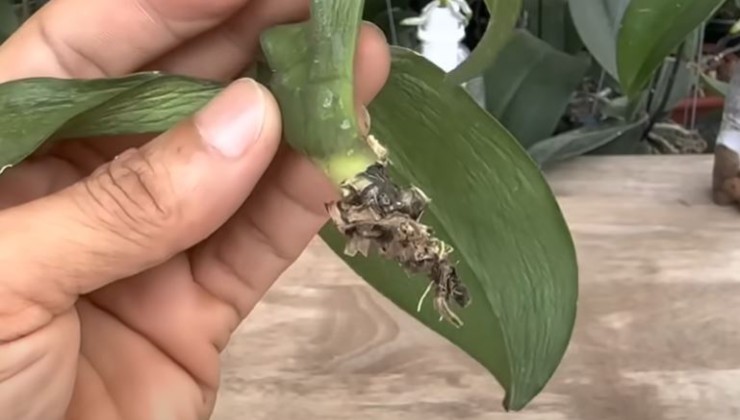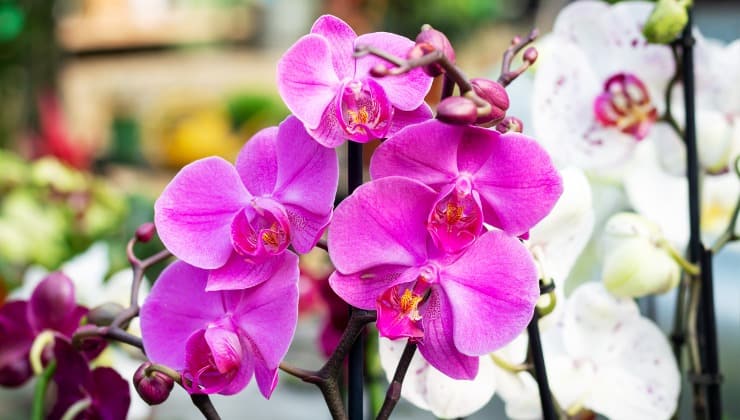Did you know that you can get plenty of flowers and roots from the orchid if you carry out this procedure once a month? Let’s find out what the process is and how to carry it out!
There is a process that allows you to obtain abundant flowers and roots from the orchid if you use it once a month. What is the process? The process involves the orchid’s aerial roots, which need to be treated in the same way as those in the pot. Let’s find out what you can do to have abundant roots and flowers!

Because the orchid forms aerial roots
The aerial roots produced by orchids are a completely normal process for these plants, as they inherit this characteristic from genetic factors of the species from which they originate.
The function of these roots is to absorb water and nutrients, to hold the plant even more firmly to the ground and to contribute, albeit minimally, to photosynthesis. This behavior does not change when the plant is in a pot.
The orchid’s roots seek water and support from multiple sources to ensure their survival. Let’s assume they behave this way instinctively and naturally, and it is good if the orchid no longer produces roots as it feeds on the aerial roots.
This is generally because the soil is not suitable for the growth of orchids and root production is therefore concentrated outside the pot.
What to do with the aerial roots of orchids?
The aerial roots of the orchid should not be cut off, but should ideally be moistened to promote growth. To prevent them from falling to the ground, it is advisable to place the pot in a larger pot so that it stands higher and to put the aerial roots in a plastic jar of water. When the water is absorbed, fill the jar to give them the nourishment they need.
As mentioned earlier, the roots of orchids that are sticking out of the pot should never be cut unless they are dry and dead. These roots add charm to the plant and testify to its good health. If the orchid has aerial roots outside the pot, it is very likely that it has not suffered from waterlogging, so it is definitely healthy.
Avoid potting the aerial roots, as there is a risk that they will not adapt to the bark and could therefore die. Another trick is to spray water over the aerial roots to provide the plant with moisture.

When should orchid aerial roots be repotted?
If you do not want to see these roots outside the plant, then repot them, but do not cut them off. However, you must acclimatize the orchid’s aerial roots to higher humidity in the soil before repotting. Here’s how:
- Wait for the right period to repot the orchid.
- Spray water on the aerial roots in the 2 weeks before repotting;
- Be careful not to wet the stem and leaves;
- Spray water twice a day and then increase to 4-5 times.
This allows the roots to become accustomed to the higher humidity and root well in the substrate.
Get more orchids from aerial roots
You can also grow other orchids from aerial roots. If there are too many and they are healthy, cut the orchid from the stem part with sharp scissors and separate it from the root. Plant the aerial roots in a separate pot and add a spoonful of ground cinnamon. Make sure that this gets into the cut-off part to disinfect it.
Now place some clay balls to plant the other orchid, place it in the pot and add the soil. Let it soak in hydrogen peroxide for half an hour to soften the roots.
Place pine wood and moss on top to nourish the plant and allow it to grow and develop optimally. You will see that your orchids grow lush and produce many beautiful flowers, and plenty of them! As you can see, the orchid’s aerial roots are very important and you can only prune them when necessary!

